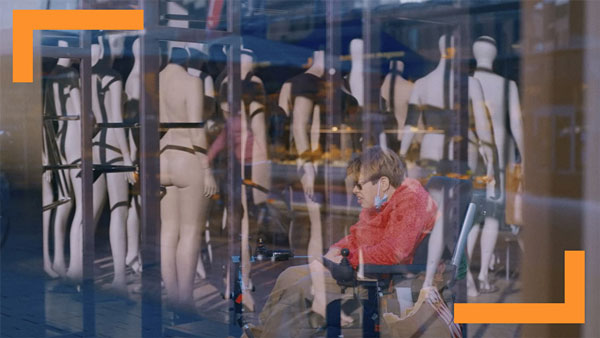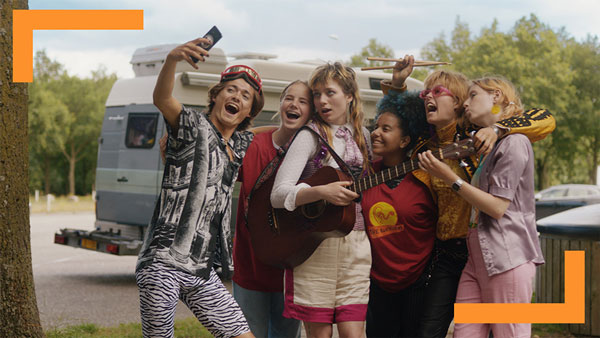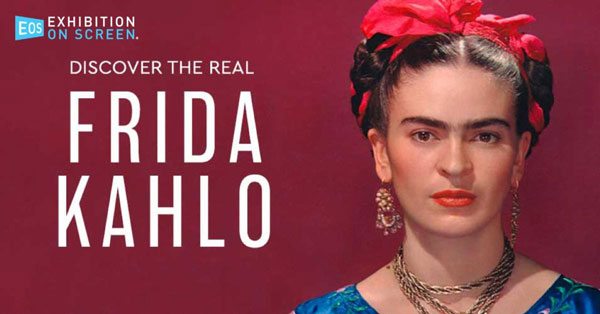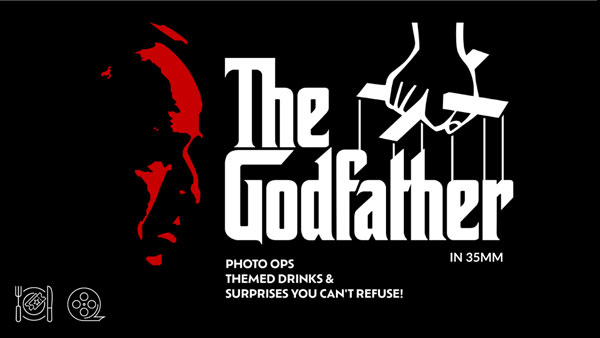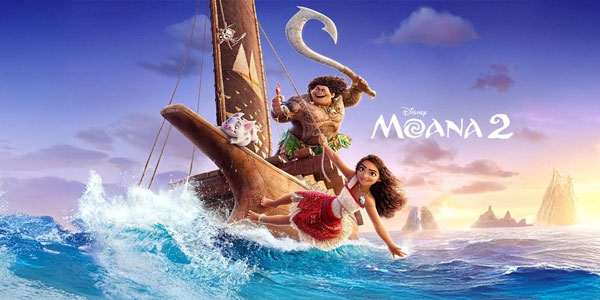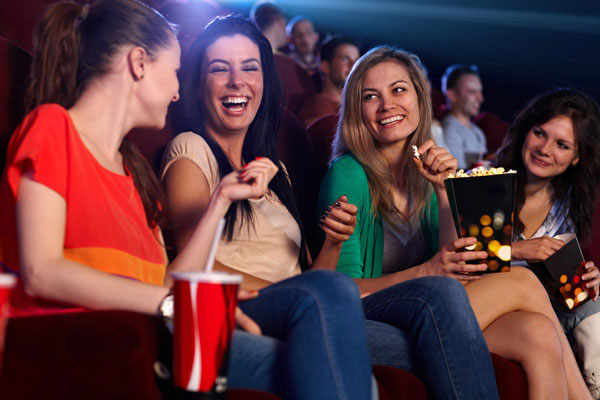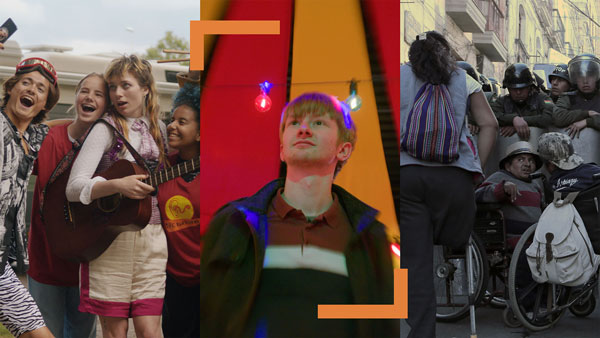United States Super 8 Film + DV Festival Celebrates 36th Anniversary!
By Al Nigrin
originally published: 02/13/2024
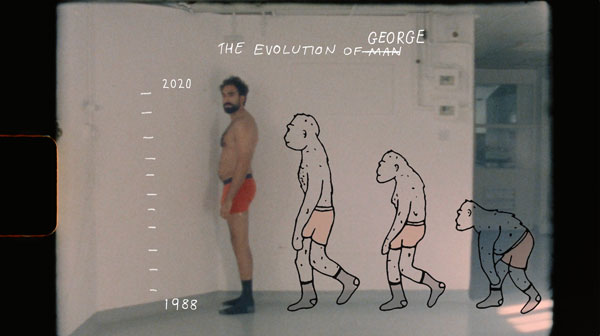
Still from Gregg Chilingirian's film George
Now in its 36th year, the United States Super 8mm Film & Digital Video Festival is the largest and longest running juried festival of its kind in the world. The festival encourages any genre (including animation, documentary, personal, narrative, and experimental) made on Super 8mm/8mm film, Hi 8mm/8mm, or digital video. The Festival will be held Online and In-person at Rutgers University on February 17+18, 2024.
Super 8mm film was introduced in 1965 by Eastman Kodak at the World’s Fair in New York to help the average person document their everyday lives. Super 8mm was most widely used for filming home movies between the mid 1960s till the early 1990s. Today amateur usage of Super 8mm has been replaced by digital video but the format is still regularly used by filmmakers, artists, and students. Some hope to imitate the look of old home movies. Others want to create alternative looks for flashback sequences and altered states of consciousness. Some just like the idea of creating images in the classic style of using actual film. Super 8mm is a relatively inexpensive film, making it popular among filmmakers working on a low budget who still want to achieve the look of real film. Super 8mm has become quite common in theatrical features. J.J. Abrams 2011 film Super 8 pays homage to the little film format. Guy Maddin’s surreal 2006 film Brand Upon the Brain and Jim Jarmusch’s 1997 film Year of the Horse -- a documentary on Neil Young’s band Crazy Horse -- use it too.
I fell in love with Super 8mm when I started making films in 1982. I liked the fact that you were pretty much in control of every aspect of the filmmaking process. I could even develop the film myself. It was the DIY aspect of Super 8mm that first lured me in, but it was the grainy, oneiric (dreamlike) quality of the film stocks that sold me on this format. I have since made over 30 short (mostly experimental) films using Super 8mm. I started touring my work and showing it all over and then met two of the biggest Super 8mm film supporters in the USA. They are the husband and wife team of Bob Brodsky and Toni Treadway. They founded and ran the International Center for 8mm Film and Video in Massachusetts for over 30 years. Through their non-profit organization they subsidized many Super 8 filmmakers by sending them to film festivals in the USA, England, France, Venezuela, Brazil, Canada, and others. It was thanks to them that I got to visit so many wonderful festivals and countries. The largest United States-based Super 8mm Film Festival in the 1970s and 1980s was the one in Ann Arbor, Michigan. Bob and Toni sent me there to show a package of experimental films that I had curated in 1986 but by 1988 the people who ran this legendary festival decided they were going to cease operations. Bob and Toni suggested that I create one at Rutgers since I had set up the Rutgers Film Co-op/New Jersey Film Festival back in 1982. So, I did and called it the United States Super 8mm Film Festival. The first of these was a curated program where I invited Super 8 filmmakers that I admired to screen their work but the 34 that followed were juried festivals where a panel of judges picked the winners. The Festival has changed over the last 3 decades going from screening Super 8mm films exclusively to then including Hi 8mm videos and now digital videos. Also, for over the past two decades Pro 8mm based in Burbank has been a major sponsor of this Festival. They provide a wide variety of Super 8 services and film stocks for filmmakers. I thought it would be nice to ask some of the filmmakers who are Official Selections in the 2024 United States Super 8mm Film & Digital Video Festival to talk about Super 8 and the films they are showing at this year's program. The filmmakers that I spoke to are: Julia Yezbick (Detroit, Michigan); Michael Kam (Singapore); Gregg Chilingirian (London, England); Brook Pruitt (Pharr, Texas); and Phil Docken (Minneapolis, Minnesota).

Still from Julia Yezbick's Roses, Pink and Blue
Nigrin: Tell us about your film that is a finalist in the 2024 United States Super 8mm Film & Digital Video Festival and why you decided to make it.
Yezbick: In 2021, I lost a very dear person in my life to pancreatic cancer. She was like a mother to me and while we all knew we wouldn't have her with us for much longer, her unfathomable ebullience in the face of death made it hard to believe. The film, Roses, Pink and Blue is an elegy for a lost balloon. The balloon was from a baby shower for her grandchild. It was no secret how desperately she wanted her son to be a father and everyone knew she wouldn't miss this event if it were possible for her to be there. Her absence from the baby shower was the moment when I first felt her slipping away. When the balloon escaped and floated off becoming a speck in the sky, and then finally invisible, it felt like I was being gut-punched by the universe. After I wrote the text I wanted to share it somehow, to share my grief and sense of helplessness. I asked my partner: "What should I do with this?" He said: "You're a filmmaker. Make a film."
Pruitt: Errors and Trials is a 13-minute experimental project shot in south Texas. It does not have a narrative story and uses many audio and video filters and effects. The audio was recorded separately with a digital audio recorder. The edited audio is Left, Right, and Center channels. The Left and Right audio channels use the same audio clips, yet each audio clip for the Left and Right sound slightly different because different Reverbs were applied to each audio file. The audio clips on the Left and Right channels are everyday recordings around the house and at various remote locations, which do not resemble reality. The Center audio channel is reality, and does not have any filters or effects, other than adjusting the gain. The center channel plays really low in the background. It took over one year to produce Errors and Trials. The audio was recorded first and then edited. There are over 25 minutes of edited audio filters and effects that were not used in the final project, which was whittled-down from over an hour of edited audio edits to choose from. This was very much an Errors and Trials experiment with video and audio filters and effects. I decided to produce Errors and Trials because I wanted to delve into After Effects more and this project really helped boost my skills, not only with After Effects, but Photoshop, Premiere Pro, and Adobe Audition. I had viewed many tutorials about editing such techniques as Cloning, Masking, Chroma Keying, Pleasantville Effect, Superman Effect, Changing Colors, Match Moves, Tracking the Camera, and in the camera transitions, and wanted to replicate these techniques onto Super 8 film stock. My hobby is Super 8 mm film.
Docken: I make films, like you thRill me, that arise from - in no particular order - my interests, thoughts, experiences and inspiration. Any image, sight or moment can be the beginning of a film.
Chilingirian: George is my debut film as a writer director and is set across London and Amsterdam. Momentarily distracted from his existential crisis by the enigmatic Kiyoni, 30-year-old George is suddenly forced to confront his past, in a desperate attempt to process a life-altering event. I have had a version of this story in my head for the last 16 years. It’s been in many forms, most recently a novella that I wrote a few years ago. It explores themes I'm passionate about and I've always wanted to put something out in the world in the most compelling and easily digestible way possible. It took one of my best friends to finally suggest in early last year ‘Do it as a short!’.
Kam: My day job involves teaching filmmaking at a local polytechnic. I also create short films every now and then. During the COVID lockdown period, we had limited, if any, opportunities to create new works. I was looking to work on a documentary short focusing on how the pandemic affected people from marginalised segments of society. I had been in touch with the head of an organisation called 'The T Project’ (https://www.thetprojectsg.org/), which provides accommodations, healthcare, financial aid, and employment opportunities tailored to the less fortunate within the local trans community. She kindly proposed some potential interviewees that I could speak to. Eventually, I gravitated towards Kristin, a 60-year old trans Muslim woman who had an fascinating life story to share, and also interestingly, adopted a number of kittens during the COVID period. These cats brought her great joy, but also a fair amount of tension during the COVID period. I felt the combination of both these threads made for a potentially interesting documentary, and that was how it got made.
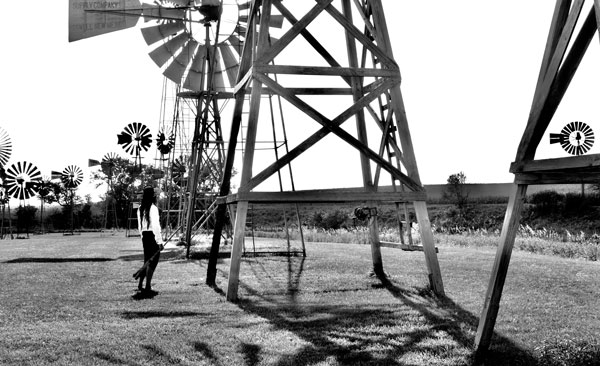
Still from Phil Docken's you thRill me
Nigrin: Why did you use Super 8mm for your film?
Yezbick: I chose to shoot on Super 8mm, in part, to convey this sense of the "home movie" as the original act of archived nostalgia - it has almost baked into it a kind of longing for something that is no longer - what Barthes calls the "that has been" of a photographic image. But I was also just really curious about Ektachrome filmstock and wanted to see if it was as great as rumor made it out to be. Color was very important to me in this piece (as also indicated by the title). I shot the scenes on Lake Michigan first and was hoping to convey the many shades of blues of its waters. In the second half of the film, I was specifically looking for subjects whose colors would pop and found a stand of late-blooming Cosmos, Dahlias, and Zinnias. I think it was late October and at this time of year, I annually grieve over the slow draining of color that happens as autumn blushes and then recedes into the cold greys of Michigan winters. I often find myself just staring at natural things that bounce color into my eyes (not screens or blue-light) as if I'm storing the colors up in my retinal memory to carry me through to spring. I wanted to flood the cinema with the colors of these flowers to act almost as a healing balm to bathe in and to combat the cold, creeping blues. To me, pink and blue represent the tension between the living and the non-living world. Pink was the pink of the balloon, but also of flesh, of new life. Blue was the sea, but also coldness, death, and making peace with grief. In the end, I was indeed impressed with the way the Ektachrome delivered those colors and seeing it projected big was truly healing.
Pruitt: I have had awesome luck with Super 8 mm film and acceptance into film festivals. All the projects I have shot on Super 8 have screened at film festivals. I also produced a music show Promo on Tri-X B&W that was used on the intro to a local band music show. I purchased 6 film cameras off Ebay while in Film School and learned by making mistakes. The cameras were not very expensive. Some need light meter batteries, are missing eye cup pieces, and a few have a lot of spool play (up and down) when filming. I use Super 8 mm because I love the small format medium. The colors and the look are very different from analog and digital video recordings. Super 8 mm is nostalgic and reminds me of home movies when I was a kid. I love the medium and can't wait to do another project on Super 8 mm film stock.
Docken: I love film! It has a sovereign quality. Super8 is just inexpensive enough so one can shoot from the hip without having to take out another mortgage.
Chilingirian: Shooting on super 8 unexpectedly offered two advantages, one - it immediately gave the film the dreamy, nostalgic, lo-fi ambience that not only enhanced the story we were telling - but also solved the limitations that come with only having a tiny budget. It also meant - due to not being able to watch playback - there was no opportunity to get precious over takes and performances. I just had to trust and feel that we had got what was needed in the moment and pray it was there when we got to the edit.
Kam: I’ve been shooting on Super 8 since 2007, after attending a workshop. My focus for the longest time was to create home movies, just like my grandfather did back in the day. What I filmed on Super 8 serve as a unique and memorable way for me to share with my wife and kids our holidays overseas or excursions to some local sites. Over the years, I purchased and experimented with a few Super 8 cameras, as well as a few kinds of film stocks, before settling on two to three camera models and a film stock that I was most comfortable with. My documentary short film Kristin dan Kuching Kuchingnya was made as part of a program called “Home Movie Day: Singapore”, which seeks to promote the Super 8 format and Super 8 filmmaking. Through it, I received two rolls of Kodak film that I was given the challenge of creating a short film. Making this film in a way took me out of my usual ‘home movie’ comfort zone to make a work that focuses on a documentary subject. But regardless of whether it's for a home movie or for such a project, I really appreciate the fact that Super 8 filmmaking does not require a lot of resources (if one chooses) and is relatively friendly on the pocket compared to other film formats and other higher-end digital formats. One can get interesting visuals on celluloid. And in a way, it is quite freeing, allowing one to focus on the personal, the intimate or something creatively risky that one might shy away from when using more expensive gear and such.
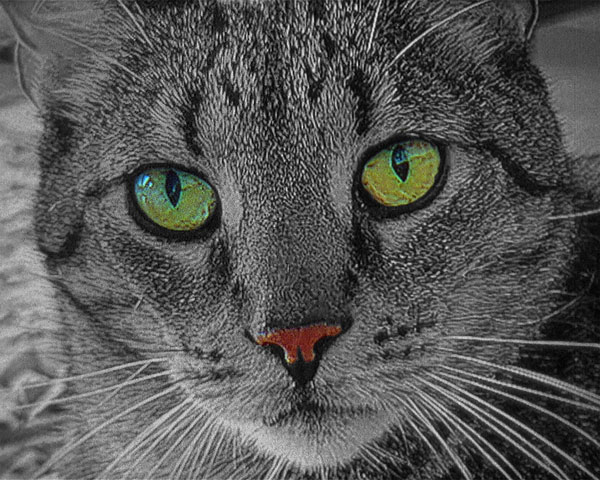
Still from Brook Pruitt's Errors and Trials
Nigrin: Do you find getting Super 8mm materials and film more difficult these days?
Yezbick: Not so hard to get, but definitely more expensive. One thing I've always loved about Super 8mm is its accessibility when compared even to 16mm, but now a reel of Super 8 costs as much as 16mm did not too many years ago!
Pruitt: Personally, I have not had issues getting Super 8mm film stock nor problems getting the stock processed and developed. I realize Super 8 is not as popular as it was in the 70s, but there are still places on the East and West coast that I have utilized for my Super 8 projects. For example: B and H Photo Video, Kodak, Spectra Film and Video, and also Cine Lab.
Docken: It’s no problem getting Super 8 film or cameras.
Chilingirian: I found it surprisingly accessible to be honest but what struck me the most - is just how passionate and giving the Super 8/Film community were. Everyone I came across on this journey from pre to post production to festival circuit - has such an excitement for being involved in something that's shooting on film - I was never not aware of the uniqueness and special quality surrounding this beautiful medium.
Kam: As far as getting Super 8 film stock is concerned, Kodak has been doing a great job. I wish we had Fuji stock to work with as well. I really liked the colours that I got when we had Velvia 50D around, as well as when Retro Enterprises in Japan released their stock on Super 8 (they typically specialise in Single 8). But still, thank goodness for Kodak! I am more worried about maintaining the Super 8 cameras that I own in the long term. I am aware that the specialists who service such cameras are getting older and retiring, and it’s likelier that fewer people will be familiar with the care and repair of such cameras. That, I foresee, will be more difficult in the years to come.
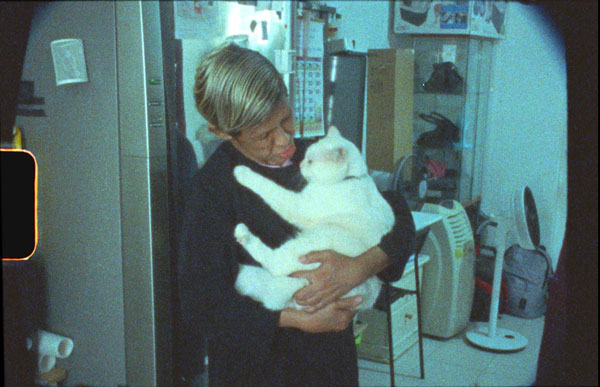
Still from Michael Kam's Kristin dan Kuching Kuchingnya
Nigrin: Are there any memorable stories while you made this film or any other info about your film you can rely to our readers?
Yezbick: I was on a camping trip with my two young kids when I shot the scenes at the lake. I made a fire just for the shoot and was also trying to multitask to feed my kids lunch at the same time. End result: hotdogs and cheese slices coated in sand. Extra gritty.
Pruitt: I could not have completed the project if it were not for the actors that were in front of the film camera. I would like to thank those five individuals that helped me. I was asked a few times what exactly would "this be used for" when I gave them directions on where to look and how to move around. It was difficult for me to explain with 100% certainty because I, myself, was unsure how the footage would be incorporated into the project. I had an idea, but when editing, things would get modified and changed how I thought I would use a few of the clips. One memorable story was an actor came up with an on-the-spot creative idea for a very short stop motion project with rectangular boxes. We incorporated their idea into Errors and Trials, and it was cool to have that kind of collaboration. Errors and Trials was not intended for commercialization. It is a passion project that helped me learn a ton about audio editing and trying my hand at using a variety of audio and video filters and effects. The film is weird, strange, and original.
Docken: For me, a film begins with a spark, an image. I choose shots that resonate with and affirm the original spark. Shooting itself also creates new directions. In the case of you thRill me the film took on its own life and I followed dutifully where it led.
Chilingirian: For me what made George so special, was the entirely guerrilla style shoot days. Particularly in Amsterdam, myself, the DOP and lead actress - cycling around the city to the various locations, getting in and amongst the public and getting the shots we needed and moving on. Nothing will beat the rush I felt on the Eurostar going back to London with all my cans in my bag, feeling, hoping and praying we'd managed to get what has been in my head for so many years. I really hope people enjoy this film as much as I have had making it.
Kam: Here’s a few points about the making of the film for your consideration. Feel free to use what works for the interview. Making a six-minute-ish film with two rolls of Super 8 can be quite challenging, considering that my documentary subject Kristin had a fair bit to share with the audience. I ended up using 85-90% of what I shot, to accommodate all her key thoughts, while also providing some footage in between in order to allow the film to ‘breathe’. I used to keep a number of cats when I was very young, and I thought I’d have an affinity with them during my shoot with Kristin. How wrong I was. I had a few moments during my shoot when one or two of the cats hissed threateningly at me. Thankfully, I did not end up with any scratches or bites. One of the things I wanted to convey to the viewer with this film is how religion can be a welcome source of solace in times of need. I am not a particularly religious person, but I can definitely see how important an anchor it can be when the sea of life gets unpredictably rough. Furthermore, as a religion, Islam often gets the short end of the stick because of how it is used and promoted frequently by zealots, fundamentalists and the like. As a religion, it is and can be quite beautiful, and personally, I saw that in my subject's prayer and I hope the audience can too. The title Kristin dan Kuching Kuchingnya is Malay for Kristin and Her Cats. I originally planned to use the latter as a title. A good filmmaker friend of mine said it sounds too much like Josie and the Pussycats and was concerned people won’t take this short film seriously. So, I eventually decided to stick to the Malay title, which has an interesting ring to it.
The 2024 United States Super 8 Film + DV Festival is this weekend!
Saturday, February 17, 2024 – Online for 24 Hours on this show date and In-Person at 7PM!
Sunday, February 18, 2024 – Online for 24 Hours on this show date and In-Person at 5PM!
View the winning films and digital videos of the International United States Super 8 Film + Digital Video Festival, selected by a jury of filmmakers, Rutgers University student interns, and media professionals. The festival--now in its 36th year—will feature finalist works by independent filmmakers from the United States and around the world. Co-sponsored by Pro 8mm! Get more info and tickets at this link: https://watch.eventive.org/newjerseyfilmfestivalspring2024
Albert Gabriel Nigrin is an award-winning experimental media artist whose work has been screened throughout the world. He is also a Cinema Studies Lecturer at Rutgers University, and the Executive Director/Curator of the Rutgers Film Co-op/New Jersey Media Arts Center, Inc.
FEATURED EVENTS
To narrow results by date range, categories,
or region of New Jersey
click here for our advanced search.
EVENT PREVIEWS







